A Double vertical Hog Wire Tomato trellis is so useful! Hog Wire Provides good support for leggy Tomato branches. It’s easy to install, works fantastic and lasts for years
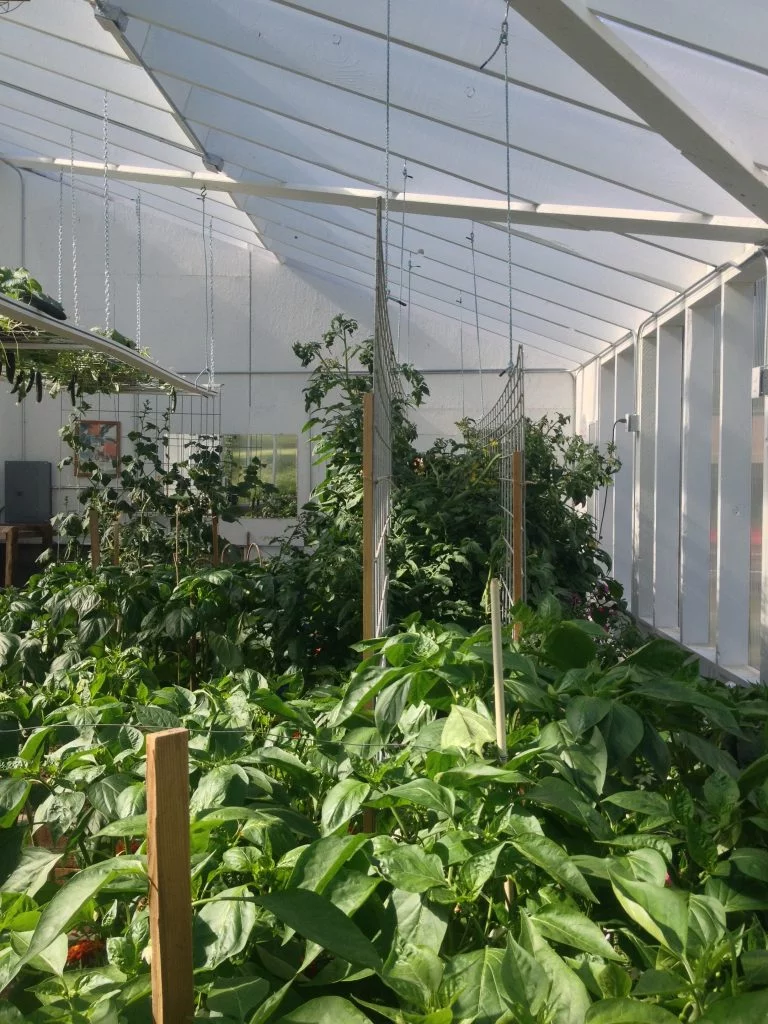
Double Hog Wire Tomato Trellis in July. By the seasons end in October you won’t see the trellis at all!
Double Hog Wire Tomato Trellis in Action!
For Years and years Dave grew tomatoes outside in his 14′ x 12′ ‘tomato house’ in the garden. It was built of cobbled together framing materials he upcycled from our old barn. He covered it with 6 mil plastic that disintegrated due to sun and wind damage and needed replacing every year. The tomatoes were happy in there. He hated it!
The tomato vines grew together into a complex maze of intertwined branches and willy nilly trails of twine. By summer’s end tomatoes grew up to the 6 foot ceiling, went sideways and formed into a maze of twine, vines and hard to find tomatoes. A high level of flexibility, patience and grubbing around in the dirt was required to get in to harvest the tomatoes. Crawling around in that cramped area with closely packed, sprawling staked plants convinced him he needed a better growing system for his tomatoes.
Our greenhouse is his answer
Building the raised beds in there and using his Double Hog Wire tomato trellis is his version of tomato growers bliss! He built this system in 2014. It is still working great. He had to raise the trellis up this year to support the top of those vines. They grow clear up to that nine foot ceiling and hang over!
WHY HOGWIRE?
Hog wire is used for various types of farm fencing, or railings. In the last several years, gardeners have found LOTS of ways to use this handy material for supporting plants. Dave is one of them.
He has used hogwire to make our Grape Arbor, this tomato trellis and a high horizontal trellis up high in the greenhouse to grow cucumbers and hang planters. Pictured below you can also see against the back wall another vertical trellis he has cucumbers growing on.
Lots of ways to use those panels! THEY LAST A LONG TIME SO THEY ARE WORTH THE PRICE!
PICTURED BELOW: SEVERAL TRELLIS IDEAS YOU MAY GET INSPIRATION FROM: Look at the hooks. He has also used chain instead of rope. Use what you have!
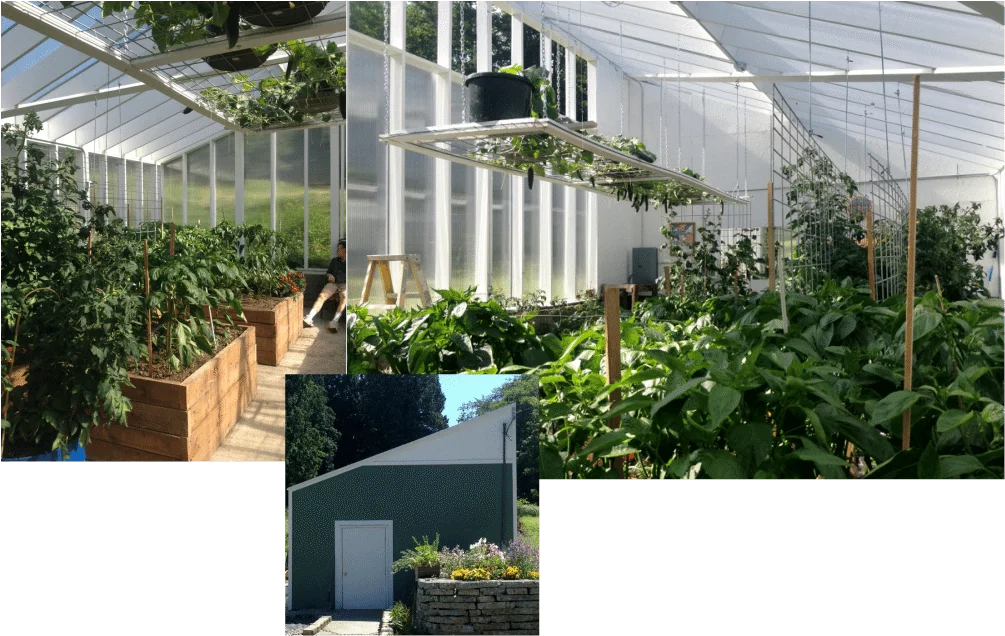
Our greenhouse with double paneled hog wire tomato trellis and other trellis ideas.
BUILDING THE DOUBLE HOG WIRE TOMATO TRELLIS:
This trellis is built to descend from a frame, like our rafters. If you don’t have one, you will need to make one. Our rafters are nine feet high at the short side. The tomatoes use all that height! Working outside, maybe build a frame that is driven into the ground and supports the panels from the bottom and sides. Still try to get some open space under those panels for access to the plants and to add the height they need . Or plan to do a lot of vine training 🙂
Prepare: YOU WILL NEED:
- 6 good strong screw in hooks.
- good strong rope or twine to whatever length suits your project
- six 1 x 1 inch 4 foot stakes (or something you have on hand that works!) and twine for tying them.
- 2 12 foot long Hog Wire Fencing Panels with large 6 inch holes (so your hands can get through holding a tomato or vine)
- two friend to hold up the panels while you attach them to the rope!
- A 6 foot ladder to reach the top and tie off the panel
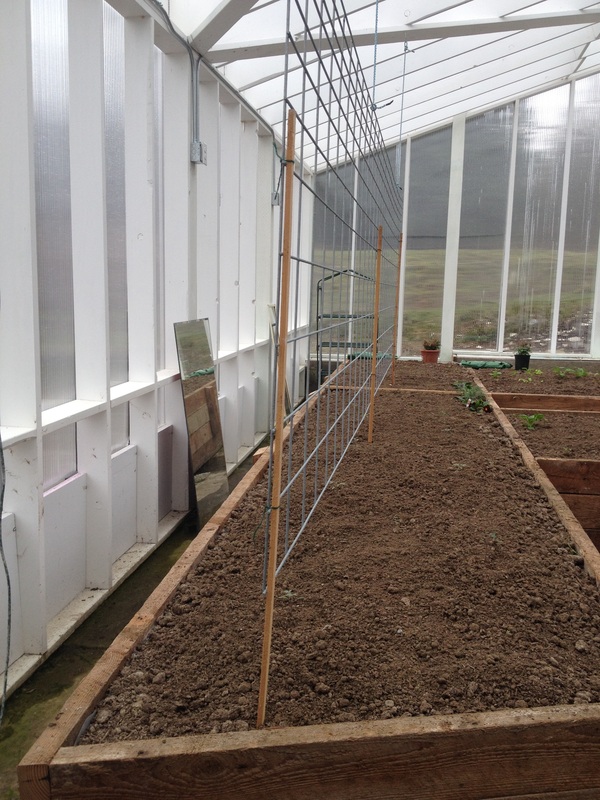
First Panel is finished!
Instructions:
- Measure where you want the trellis to be.
- Mark the spot on each end of the panel and in the middle of your frame.
- NOTE: Place the panels about 18 inches apart to allow airflow between the plants, give better plant support; and to give you working room.
- The panels are basically suspended in mid air with ropes holding them at the height you prefer for your frame.(in our case ascending rafters about 10 feet tall). Figure out how high you want the panels. Leave room under the panels (about 16 inches) for you to work. Most of the trellis should be for the tomato top growth!
- Screw in a hook at each end of the length of each panel and in the middle.
- Measure and cut your hanging ropes and attach them to the hooks (GET HOOKS LARGE ENOUGH TO HOLD THE ROPE!)
- NOW YOU NEED THOSE FRIENDS! They will hold the panel at the height you wish. (yes you can do this alone ,but it will be a pain!) You need to tie the ropes to the panel. KEEP EACH PANEL LEVEL(eyeball is fine), so the panel is stable and doesn’t bend. The panels should hang without the stake support. Your hooks will support all the weight of the panels and the tomato vines. Repeat this process to hang the second panel.
- Drive your stakes down into the dirt at least 18 inches, if you can. And tie off to the panels with the twine at each panel end and in the middle, as shown. These stakes are NOT weight bearers. They are in place to keep the trellis panels from moving and harming the vines as you work. The panels need to stay immoveable.
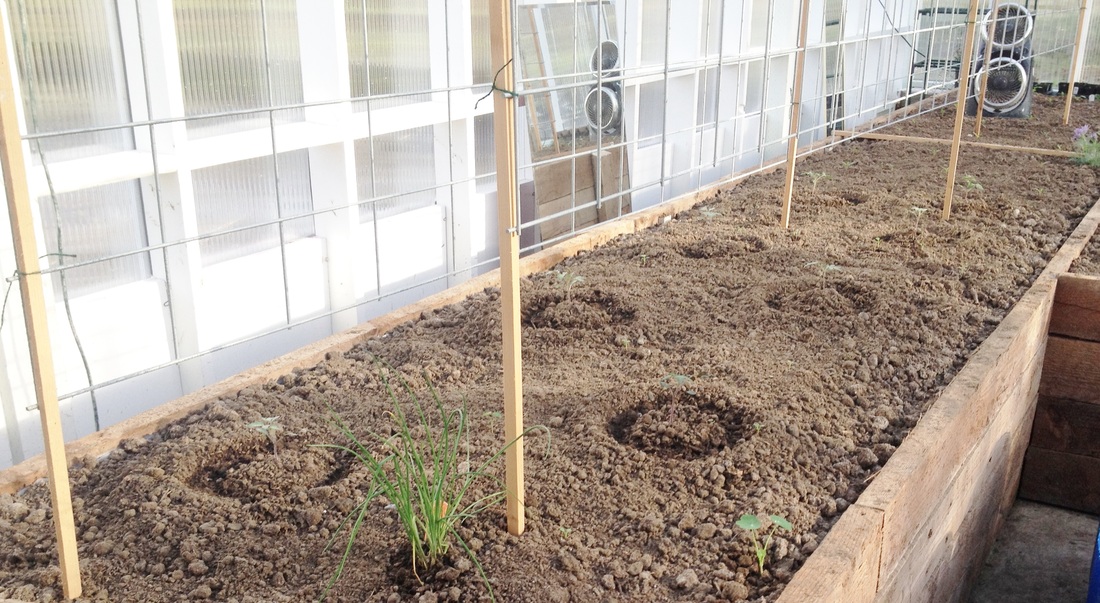
He purchased the largest grid hog wire, about 6 inch holes. Our hands can easily get into the tomato plants, between the two trellises, to pull out the tomatoes. We need a step ladder to get into the upper reaches, but it is fairly easily managed.
TWO YEARS LATER:
Trellis is still working great! This is our third season with this set up. Dave is very happy with it!
Obviously, the greenhouse is designed with easy in mind. The straight raised beds let us work in closer to the plants and the Double paneled hog wire trellis reduces the twine maze we had to traverse in old tomato house. Dave has all the branches trained onto the wire so they don’t have long arms hanging out past the bed edge…Too much!
This is a good system for us! I hope this post is giving you some inspiration for trellises in your greenhouse or garden. Happy Gardening! Please comment or email us if you have any questions. We’d love to discuss it with you!
Pin it:
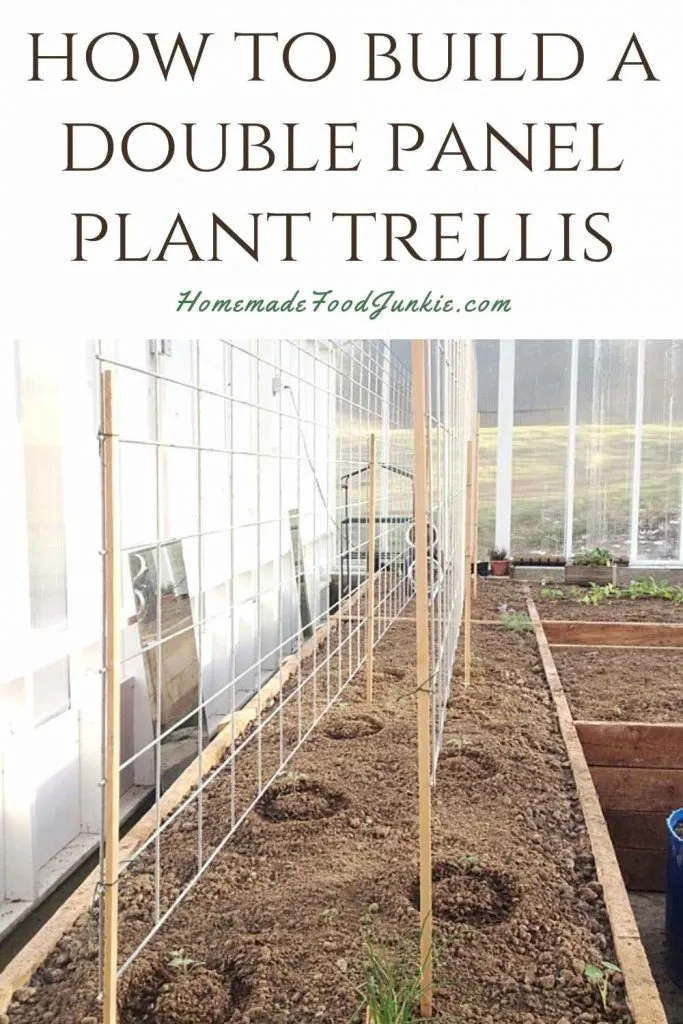


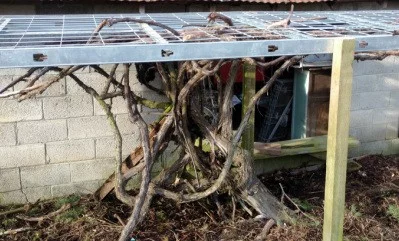
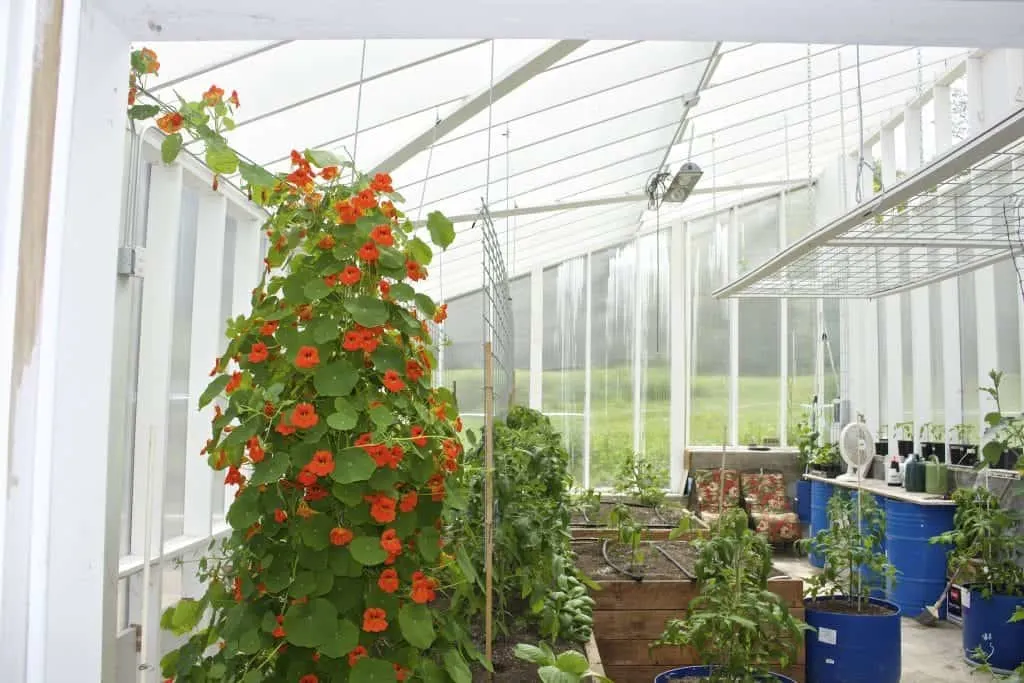
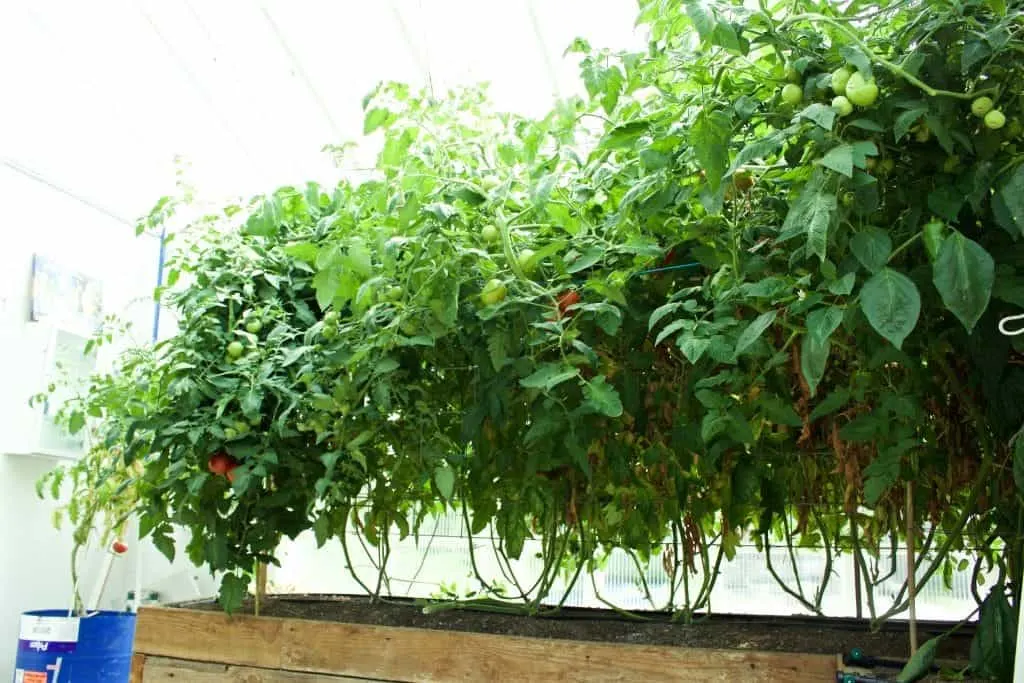
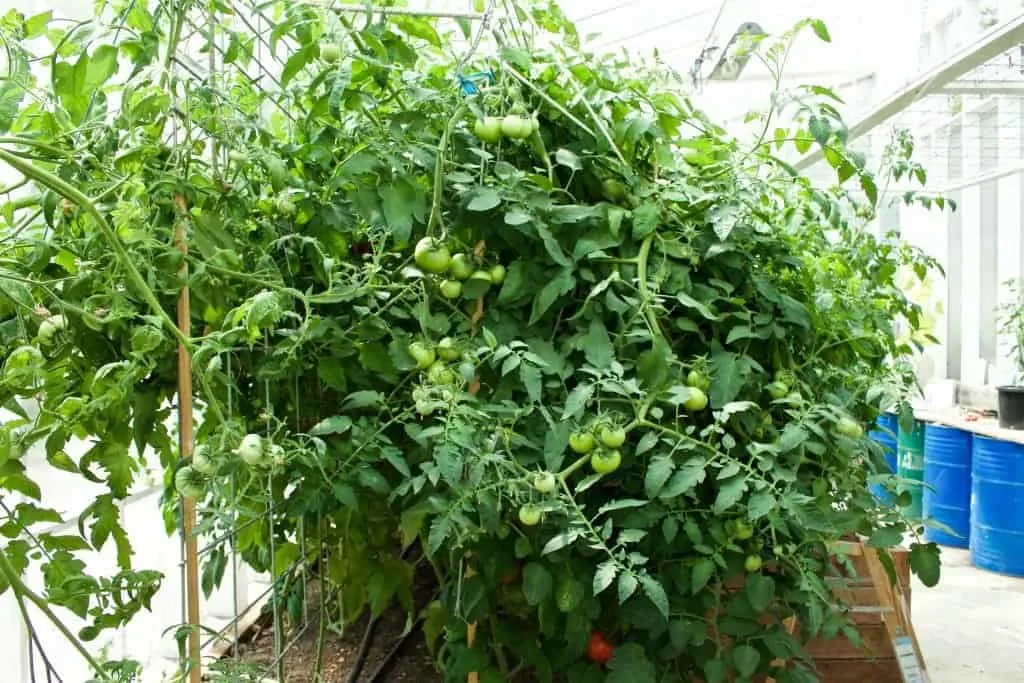
Matt
Thursday 11th of April 2024
I bought cattle panels, 50"x16ft. Cut them in half. Thicker steel and way cheaper than two 8ft panels. I did two panels, then a tomato down the center, every 18". Added cross pieces every 18". Looking down, the shape of a ladder. I get only 6 tomatoes for the 8ft row. But, very well supported in our windy area. These panels should last forever!
Diane
Thursday 11th of April 2024
Hi Matt, Yes! Im; sure your tomato trellis will last as long as you want it to. Our double tomato trellis is still strong and sturdy after 9 years of growing various tomatoes and peppers on them. Happy Gardening!
Karen
Sunday 8th of May 2016
Wow this is amazing. Thanks for sharing on Let's Get REal Friday
Diane
Sunday 8th of May 2016
Thanks for the visit Karen!